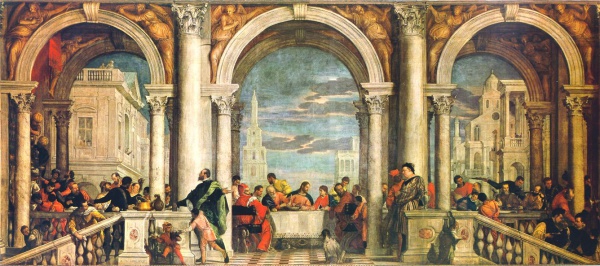Facts About The Feast in the House of Levi
"The Feast in the House of Levi" also known as "Christ in the House of Levi" is a renowned painting by Paolo Veronese from 1573, housed today in the Gallerie dell'Accademia in Venice. Originally, it was intended to replace a work by Titian in the refectory of the Basilica di Santi Giovanni e Paolo. This monumental canvas, one of the largest from the 16th century, depicts an animated banquet scene with Christ at the center, surrounded by a diverse assembly in a richly detailed setting.
The painting, however, generated considerable controversy. The Roman Catholic Inquisition objected to what they perceived as irreverent and unconventional elements within the artwork. Veronese was summoned and interrogated about his artistic choices, facing accusations of heresy. In response to these concerns, he renamed the painting and reframed its subject to reflect an episode from the Gospel of Luke, which describes a banquet attended by sinners.
During his interrogation, Veronese defended his artistic decisions, invoking artistic freedom and tradition. Despite the Inquisition's criticisms, he was ultimately required to make only minor adjustments to the painting within a specified period.
"The Feast in the House of Levi" remains a significant work in art history, celebrated not only for its grandeur and artistic brilliance but also for the controversy it ignited. It provides a compelling insight into the artistic practices and religious sensitivities of its time.

 San Marino
San Marino